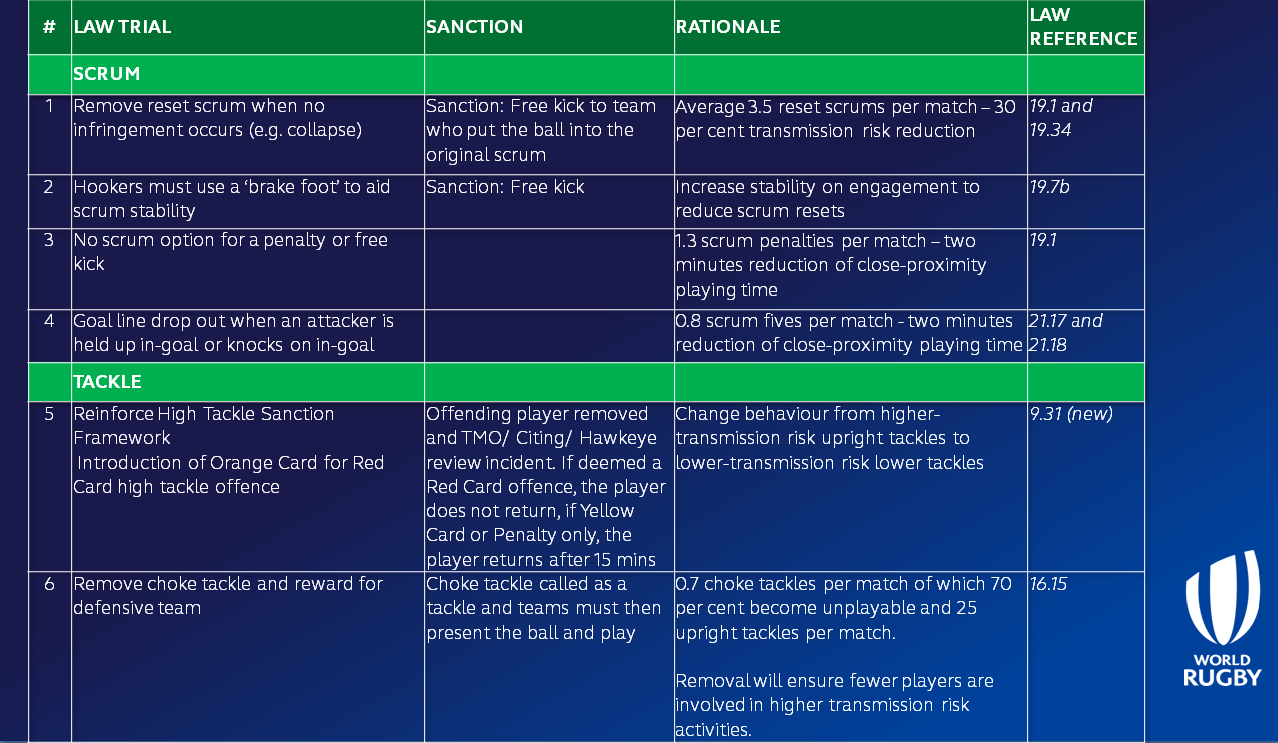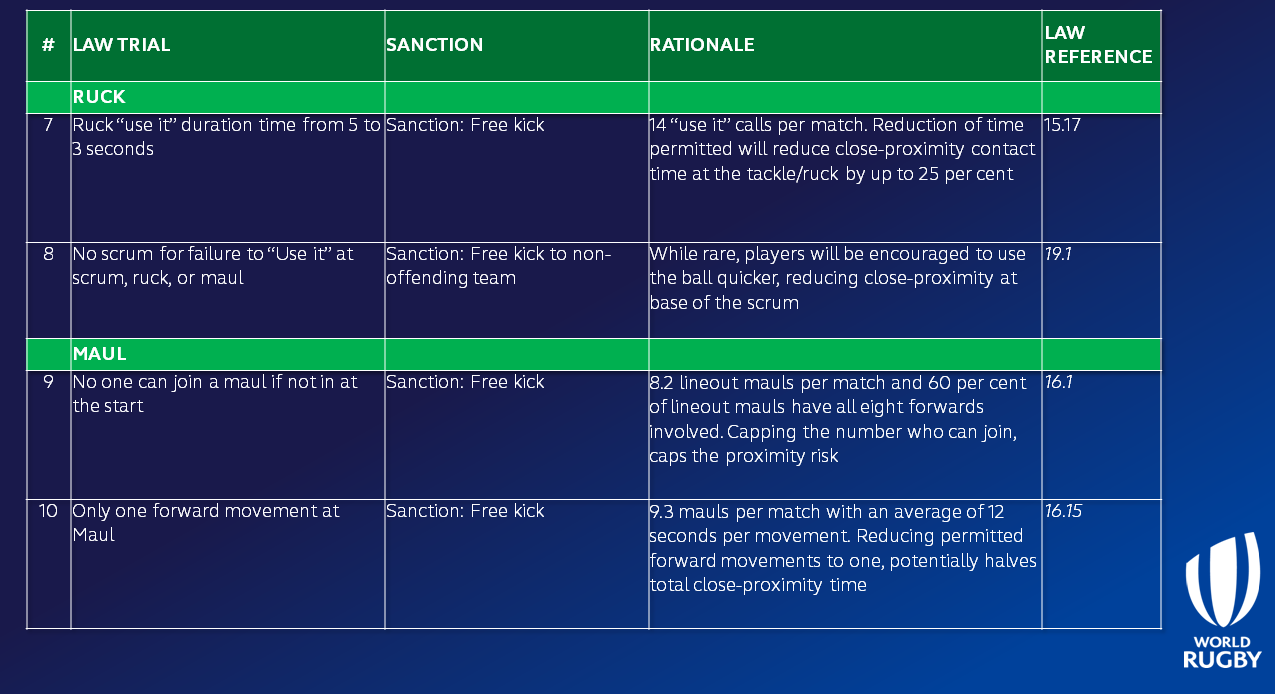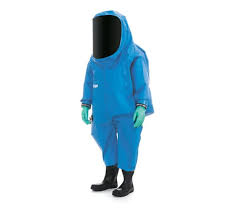Law trials and changes
-
@antipodean said in Law trials and changes set for 2017 and beyond:
They're not implementing a waist line tackle height for Super Rugby are they?
No.
-
Clarification SANZAAR
2020 Law Trial On January 13 World Rugby issued a media statement that set out the various law trials that would be trialled in various domestic competitions around the world in 2020. The trials were approved for the four-year law amendment review cycle that began after the 2019 World Cup following an analysis by the Law Review Group last March and several unions expressed interest in operating one or more of the trials. SANZAAR is supportive of this process and awaits the outcomes of these trials to ascertain their effect on player welfare and the game. The only trial that will be introduced to Super Rugby is the High Tackle Technique Warning. SANZAAR will be appointing a tackle technique review officer to oversee the trial. Preventing dangerous high tackles remains a high priority for SANZAAR and World Rugby as we look to reduce the number of concussions. Research has shown that the majority of concussions are caused by tacklers who tackle with an upright body. SANZAAR is focusing on implementing a process that identifies high-risk upright tackles. The shadow trial will see SANZAAR looking at all tackles each round and identifying tackles in which the tackler is in an upright body position, and in the event it is deemed the tackler has shown poor technique in executing an upright tackle, a warning may be sent to the player and player's coach. This process will be an educational process that will aim to educate players and coaches of high-risk behaviours by identifying poor tackle techniques and seeking to inform players of better choices they can make in the tackle zone. This process will not impose any sanctions on Players. This is not designed to penalise the player in any way but to hopefully shine a light on poor technique that has been shown to increase the risk of significant injury and attempt to affect behavioural change via education and identification. Further details on this process will be released in due course.https://www.superrugby.co.nz/news/four-new-zealand-rugby-referees-confirmed-for-super-rugby-2/
-
Not a law change, but law application guideline
World Rugby issues breakdown law application guideline
World Rugby has issued a law application guideline for the breakdown following the Executive Committee's approval of recommendations by the specialist breakdown working group.
The Law 14 and 15 application guideline will be operational for all competitions commencing after 1 July, 2020 and reinforces the application of current law for what is a complex and dynamic facet of the game.
With a focus on player welfare and game attractiveness, a specialist breakdown group comprising international coaches, players, medical, laws and research experts, considered current trends and challenges and considered law change before recommending a strict reinforcement of existing law as the most appropriate and successful course of action, specifically:
-
Tackler (Law 14): 14.5 – must a) Immediately release the ball and the ball-carrier after both players go to ground and b) Immediately move away from the tackled player and from the ball or get up.
-
Ball Carrier (Law 14): 14.2 – Being brought to ground means that the ball-carrier is lying, sitting or has at least one knee on the ground or on another player who is on the ground. 14.5 – Tacklers must: d) Allow the tackled player to release or play the ball.
-
First arriving player (Law 15): 15.11 – Once a ruck has formed, no player may handle the ball unless they were able to get their hands on the ball before the ruck formed and stay on their feet. 15.12 – Players must endeavour to remain on their feet throughout the ruck.
-
Other arriving players (Law 15): 5 – An arriving player must be on their feet and join from behind their offside line. 6 – A player may join alongside but not in front of the hindmost player. 10 – Possession may be won either by rucking or by pushing the opposing team off the ball.
World Rugby has produced a comprehensive visual guide, including video explanations, for the rugby community on its laws website.
(...)
World Rugby will be educating its international referee panel on the change in emphasis and collaborating with international teams and unions to ensure alignment and understanding.
-
-
@Stargazer good to see those WR fools still working...

-
What's 'rucking'?

Seems very bizarre to reiterate that you can win possession by rucking when the act of putting your foot anywhere near a breakdown is immediately whistled.
If they are going to enforce the first bullet strictly then they must also enforce the second. How many times do we see tackled players deemed as 'not held' when clearly the tackler was still in contact when the ball carrier hit the ground but they were released as per the law?
Where is the reinforcement of not diving into the ruck and proper binding as you join. I'm sick of seeing exocet missile clean outs. -
@Stargazer I'd be delighted if they started enforcing 'not held' in a far more strict way. If you get brought down, you're tackled - you shouldn't be able to get up and go again. Personal pet peeve that sounds like they will work harder on
Edit: @Crucial I wrote mine and then wandered off before hitting submit
 Same as what you said
Same as what you said -
World Rugby announces law amendment relating to scoring against the post protector
World Rugby has announced that, with immediate effect, it will no longer be possible to score a try by grounding the ball against the post protector. The minor amendment to Law 8 was approved by the World Rugby Council during its special meeting held via teleconference on Tuesday and follows a recommendation by the international federation's Rugby Committee and specialist Laws Review Group. With defending players currently legally obliged to stay behind the goal-line and post-protector shape and size increasing for welfare reasons, it is increasingly difficult for teams to legally defend this area. In some extreme cases, post protectors have been lifted or moved by defending teams, leaving the posts exposed and therefore increasing the risk of injury..
The amended law will now read:
The post protector is no longer an extension of the goal-line and therefore Law 8.2 (a) will read:
A try is scored when the attacking player is first to ground the ball in the opponents’ in-goal..
Meanwhile, World Rugby continues to monitor evaluate ongoing closed law trials, which have been implemented with enhancing player welfare in mind. They will resume when rugby resumes. Initial feedback for the 50:22 and the below the waist tackle are encouraging, with the latter resulting in a three-fold decrease in injuries and a 60 per cent reduction in concussion in the French community game. -
World Rugby creates access to optional domestic law trials to further reduce COVID-19 risk
The World Rugby Executive Committee has approved 10 optional law trials which are designed to provide national member unions with COVID-19 transmission risk reduction options if required.
Temporary law trials relating to the scrum, tackle, ruck and maul were approved along with a package of best-practice match hygiene measures. Each measure aims to reduce individual cumulative exposure to these contact activities, which are generally accepted as presenting the highest COVID-19 transmission risk.
Unions can apply to implement one or more of the temporary law amendments as domestic trials at elite or community levels on a needs-basis in line with the World Rugby return-to-play guidance published this month.
Recognising the fluid global COVID-19 environment, implementation by unions will be entirely based on their territory-specific requirements and respective government advice and directives.
The trials are informed by World Health Organisation (WHO) guidance, which determines high transmission risk as being 15 cumulative minutes within one metre of an infected person. The important considerations for rugby are:
-
It is generally accepted that sustained close contact carries greater COVID-19 transmission risk than close proximity
-
It is also generally accepted that close proximity in an outdoor environment carries lesser risk that an indoor environment
-
As transmission risk during a game is related to both physical contact and proximity, further evidence-based risk reduction should be focused on contact activities
-
While individual exposure to contact activities such as scrums, tackles, lineouts, rucks and mauls are generally within 15 cumulative minutes, further exposure reduction is possible
-
Risk reduction can also be achieved via best-practice match management, including hygiene measures, screening, testing and implementation of World Rugby’s return-to-play guidance
-
Sport should only return when safe and appropriate to do so in line with government advice
Click here for the full package of optional temporary law trials


The law trials were considered by the specialist Law Review Group (LRG) comprising coaches, players, match officials, medics and law specialists, following a detailed analysis of 60 matches. The LRG decided against mandatory global application of the law trials given the wide variation in the presentation and management of COVID-19 across nations.
Comprehensive game analysis enabled an evidence-based approach to developing the temporary trials that limit scrum contact and time, lower the tackle height and speed up ball distribution from rucks and from mauls.
(...)
In addition to the on-field law and officiating interventions, a number of non-law hygiene measures are recommended for playing and training in line with WHO and World Rugby guidance:
- Mandatory hand and face sanitisation pre- and post-match
- Regular ball sanitisation before, during and after matches
- Single user water bottles/hydration
- Changing of jerseys, shorts and headgear at half-time where possible
- Prevention of huddles and celebrations involving contact
- Prevention of spitting and nose clearance
Recommended training measures
- Forwards units: high risk transmission activity such as an eight-person scrum should be undertaken against machine to limit exposure, packs should be trained separately
- Scrum and maul practice should take place at the end of a training session, preferably a day before a ‘down day’ to allow 24-48 hours before collective training
- High transmission risk training should be avoided within 48 hours of a game
-
-
I agree with the comments. It's a contact sport. I can think of risk-reducing options that don't involve changing the rules like this (or wearing crazy suits).
Fortunately, the trials are optional and for domestic use only.
What bothers me, also, in rule 5 is that a player can get an orange card for a "red card high tackle offence", but can't return to the field immediately if the TMO concludes that it's a penalty only.
-
i like a lot of those tweaks though
-
@voodoo The way I read the quoted text, the trials are only to reduce the ristk of COVID-19 transmission. It clearly says "temporary law trials" and they're not mandatory because the "presentation and management of COVID-19 across nations" varies.
So, unless WR/participating nations like the new laws and/or want to change rugby into league, we'll hopefully don't see a permanent change to the rules.
-
@mariner4life said in Law trials and changes:
i like a lot of those tweaks though
I only like the last.
I certainly don't like the idea of a team that can't scrum getting to opt out of the contest and play league.
